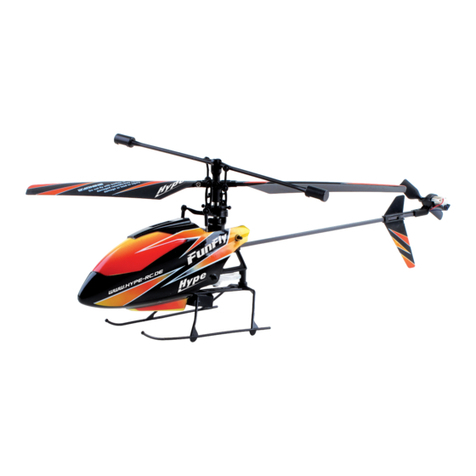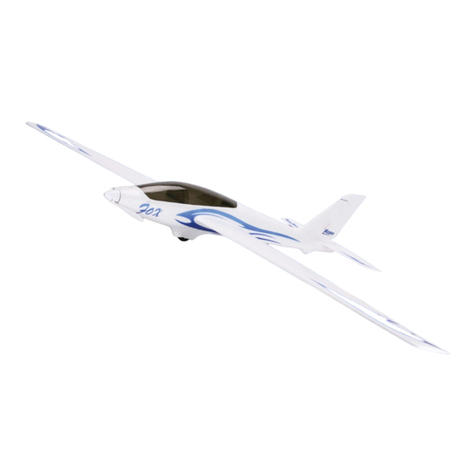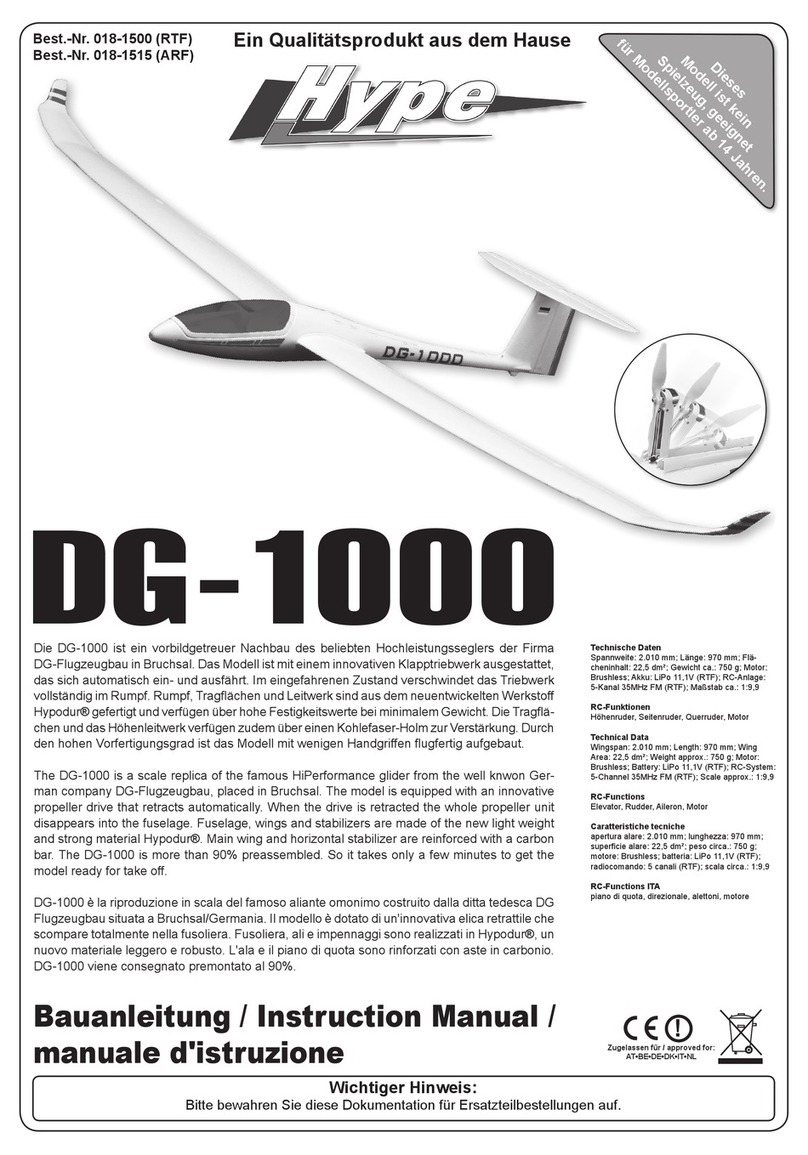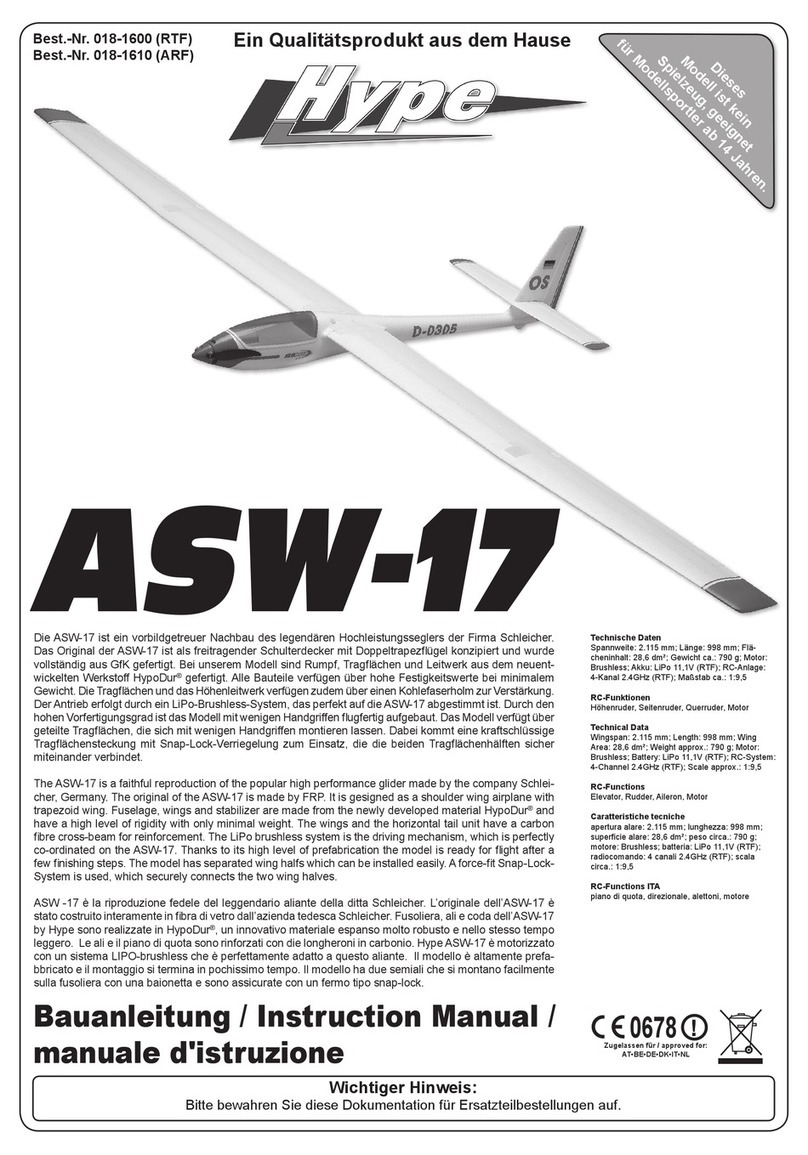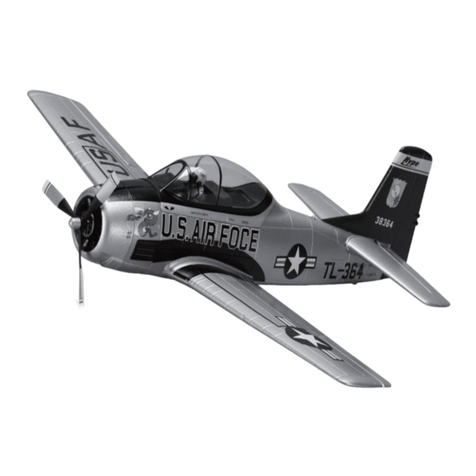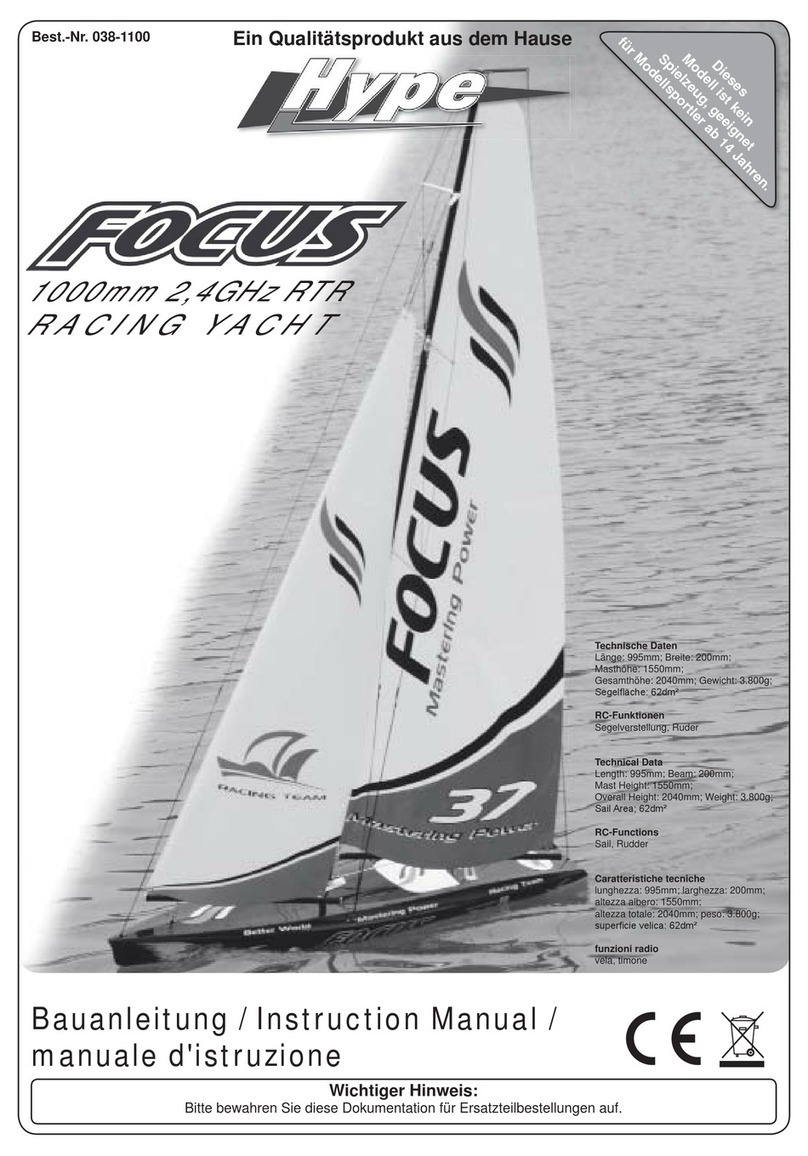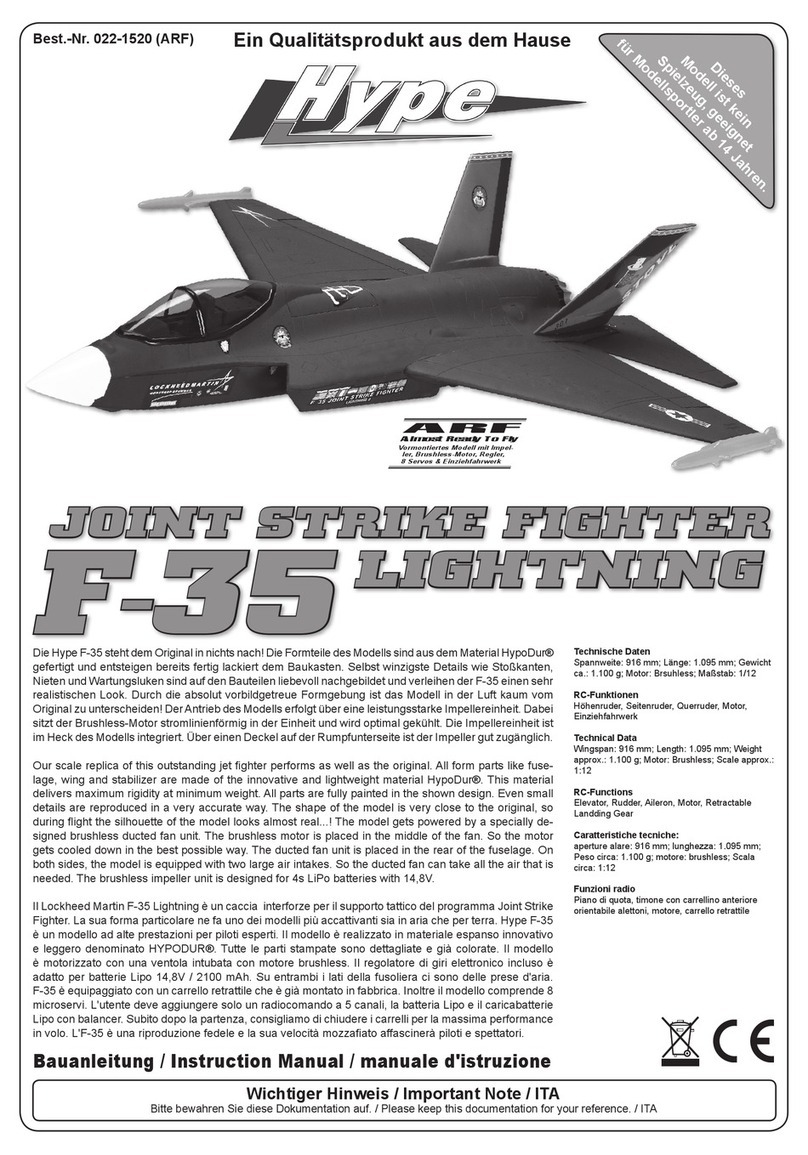Bauanleitung / Instruction Manual /
manuale d'istruzione
Ein Qualitätsprodukt aus dem Hause
Die Edge 540 war einer der Hauptdarsteller beim legendären Red Bull Airrace. Atemberaubende Action für die Zuschauer
und iegerisches Können auf höchstem Niveau waren die Kennzeichen dieser wohl einmaligen World Championship. Matt-
hias Dolderer war einer der herausragenden Piloten dieser Serie und zeigte mit seiner Edge 540 im wahrsten Sinne des
Wortes eine atemberaubende Performance. Bei unserem Modell sind Rumpf, Tragächen und Leitwerk aus dem Werkstoff
HypoDur® gefertigt und verfügen über hohe Festigkeitswerte bei minimalem Gewicht. Alle Formteile sind bereits mehrfarbig
lackiert und fertig mit dem Dekor versehen. Der Brushless-Direktantrieb wird von einem 3s-LiPo-Akku versorgt und verleiht
dem Modell ein kraftvolles Flugbild. Der Motor wird durch einen SKYWALKER 40A Regler made by HOBBYWING geregelt.
The Edge 540 is an electric powered motor plane with aerobatic ight characteristics for intermediates and professionals. The
original of this plane was used in the famous Red Bull Airrrace World Championship. The model is made of the innovative,
light weight and strong foam material HYPODUR®. This material features maximum resistance to impacts caused by hard
landings. All form parts are nished in painting, the multicolored decoration is already applied to fuselage, wing and tail.
The wing can be removed easily for transportation and is reinforced by a massive carbon strut. The model is powered by
an efcient brushless unit with high power output. The included SKYWALKER 40A speed controller is designed for the use
of 3s 11,1V LiPo batteries. With this power drive, the Edge 540 also performs impressively at windy ight conditions. Via a
hatch at the side of the fuselage, the battery can be replaced quickly when you are out on the aireld. The kit is available as
ARF or RTF version. The ARF version includes the model with 5 micro servos, brushless motor and speed controller. The
RTF version also includes LiPo-battery and balancer charger as well as the 2.4 GHz radio system.
Edge 540 è un aeromodello elettrico acrobatico per piloti con un‘esperienza di volo acrobatico media e alta. Questo aero-
modello è realizzato in un materiale espanso innovativo, leggero e robusto nello tempo, denominato HYPODUR®. Questo
materiale resiste persino agli impatti subiti in atterraggi non proprio dolci. Tutte le parti stampate sono già verniciate e le
decalcomanie a più colori sono già applicate in fabbrica su fusoliera, ali e coda. L‘ala si smonta per facilitare il trasporto ed è
rinforzata con un massiccio longherone in carbonio. Il modello ha un‘efciente motorizzazione brushless ad alto rendimento.
Il regolatore di giri elettronico brushless incluso è il modello Skywalker 40 A ed è adatto per una batteria Lipo 3s 11,1V. Con
questa motorizzazione potente, Edge 540 è impressionantemente performante anche con condizioni climatiche ventose.
Tramite l‘apertura posizionata alla ancata della fusoliera, la batteria si cambia facilmente e velocemente direttamente sul
campo di volo. Il modello è disponibile sia in versione ARF (almost ready to y) che in RTF (ready to y). La versione ARF
comprende il modello, 5 microservi, il motore ed il regolatore brushless; la versione RTF comprende inoltre la batteria Lipo,
il caricabatterie con balancer e il radiocomando in 2,4 GHz.
Wichtiger Hinweis:
Bitte bewahren Sie diese Dokumentation für Ersatzteilbestellungen auf.
Dieses
Modell ist kein
Spielzeug, geeignet
für Modellsportler ab 14 Jahren.
Technische Daten
Spannweite: 1.215 mm; Länge: 1.160 mm;
Gewicht ca.: 1.020 g; Motor: Brushless; Akku: LiPo
3s 11,1V (RTF); Maßstab ca.: 1:6,1; RC-Anlage:
4-Kanal 2.4GHz (RTF)
RC-Funktionen
Höhenruder, Seitenruder, Querruder, Motor
Technical Data
Wingspan: 1.215 mm; Length: 1.160 mm;
Weight approx.: 1.020 g; Motor: Brushless;
Battery: LiPo 11,1V (RTF); RC-System: 4-Channel
2.4GHz (RTF); Scale approx.: 1:6,1
RC-Functions
Elevator, Rudder, Aileron, Motor
Caratteristiche tecniche
apertura alare: 1.215 mm; lunghezza: 1.160 mm;
peso circa.: 1.020 g; motore: Brushless; batteria:
LiPo 3s 11,1V (RTF); radiocomando: 4 canali
2.4GHz (RTF); scala circa.: 1:6,1
Funzioni radio
piano di quota, direzionale, alettoni, motore
Zugelassen für / approved for:
!
0678

